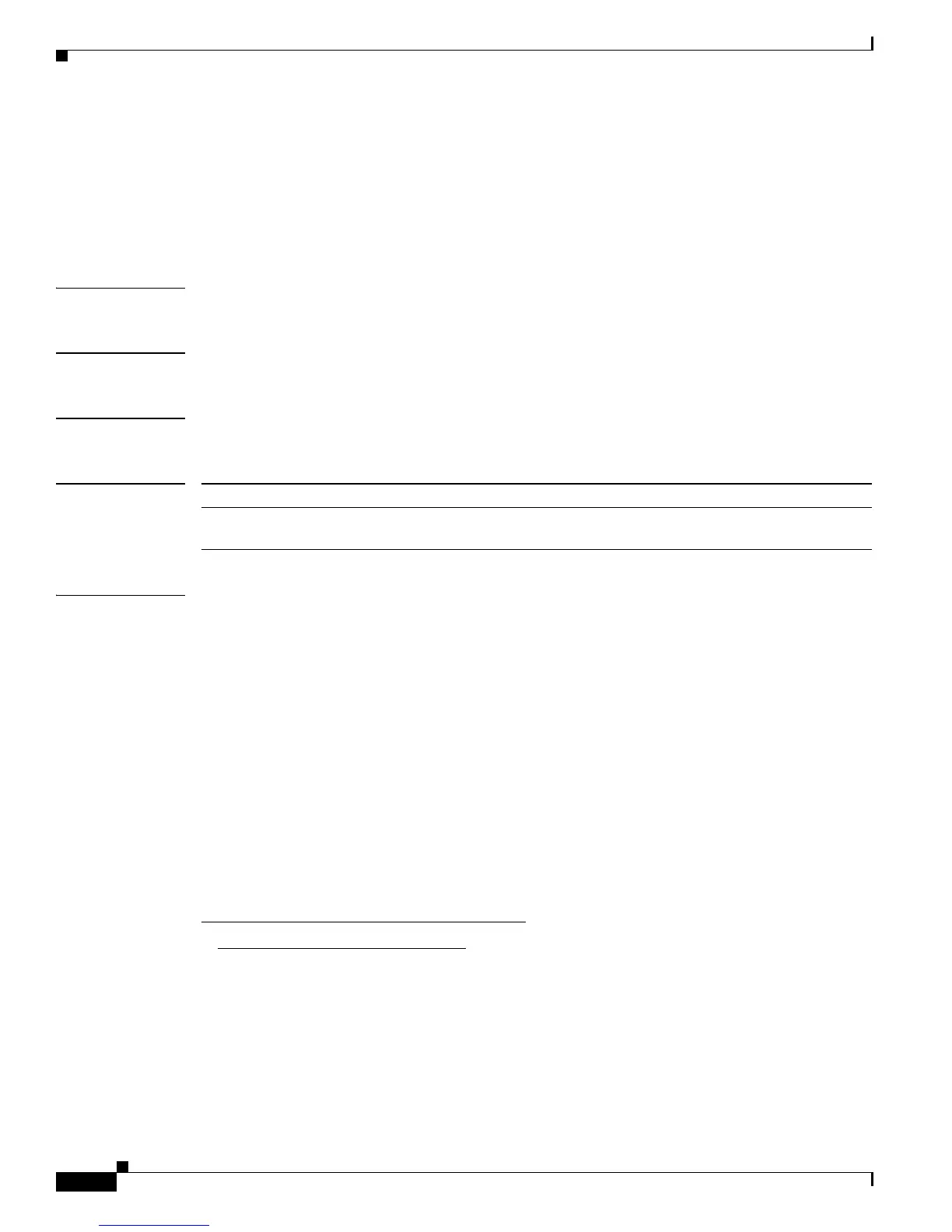2-52
Catalyst 4500 Series Switch Cisco IOS Command Reference—Release IOS XE 3.4.0SG and IOS 15.1(2)SG)
OL-27596 -01
Chapter 2 Cisco IOS Commands for the Catalyst 4500 Series Switches
auto qos srnd4
auto qos srnd4
To generate QoS configurations based on solution reference network design 4.0, use the auto qos srnd4
global command.
auto qos srnd4
Syntax Description This command has no arguments or keywords.
Defaults This command has no default settings.
Command Modes Global configuration
Command History
Usage Guidelines This command is generated when any new auto-QoS command is configured on an interface.
AutoQos SRND4 commands, when applied to an interface, generate one or more of the following
templates (A and B) at the global configuration level.
Typcally, a command generates a series of class-maps that either match on ACLs or on DSCP and CoS
values to differentiate traffic into application classes. An input policy is also generated, which matches
the generated classes, sets qos-groups on the classes, and in some cases, polices the classes to a set
bandwidth. (A qos-group is a numerical tag that allows different application classes to be treated as one
unit. It has no significance outside the context of the switch in which it was set.) Furthermore, eight
egress-queue class-maps are generated, matching the qos-groups set in the input policy. The actual
egress output policy assigns a queue to each of the eight egress-queue class-maps.
AutoQos srnd4 commands only generate a templates as needed. For example, the first time you use a
new srnd4 command, global configurations that define the eight queue egress service-policy are
generated (template B below). Subsequently, auto qos commands applied to other interfaces do not
generate templates for egress queuing because all auto-QoS commands rely on the same eight queue
models after migration, and they will have already been generated from the first use of the command.
For interfaces with auto qos voip trust enabled
—Global Level Commands Generated
The global templates are defined in A and B (below).
A. This template of application classes is used by the auto-QoS video cts, auto qos video ip-camera,
and auto qos trust commands. This template class also includes the input service-policy for the auto
qos video cts, auto qos video ip-camera, and auto qos trust commands. Because these three commands
are the only ones that use AutoQos-4.0-Input-Policy, it makes sense to include that policy in the same
template that defines the application classes used by the previous three commands.
class-map match-any AutoQos-4.0-VoIP
match dscp ef
Release Modification
15.1(1)SG,
15.1(1)SG IOS-XE 3.3.0
Support for this command was introduced on the Catalyst 4500 series
switch.

